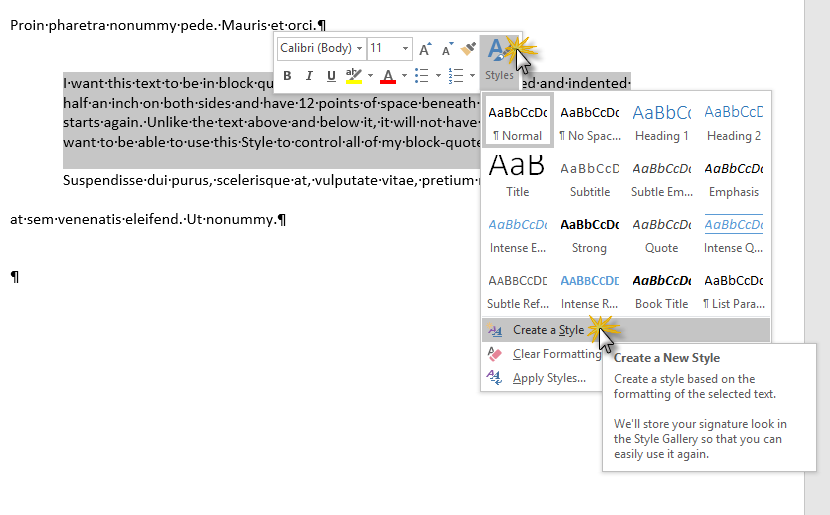

Your new heading style should appear in the Style gallery. Type a name in the Create New Style from Formatting dialog box.Select Create a Style from the Styles menu.Right-click the text, and then select Styles from the Mini toolbar.įigure 5.Text with formatting options from the Font and Paragraph group Select the text, and then use the options in the Font and Paragraph group to format it with the font, font size, font color, emphasis, and alignment you want to include in your new heading style.įigure 4.(It can be a real heading or sample text.) The new text will appear with the built-in style of the heading level you chose in step 2.įigure 3. (For example, heading level 4 will appear after you use level 3.) Additional heading levels will appear in the gallery after you use lower levels in your document.Remember that you are creating a new heading level style, but you won’t be replacing the existing built-in heading level style.This step is important because your new heading won’t be included in your table of contents or outline without an assigned level.


(For obvious privacy reasons, I'm keeping this entire family database off the public Web. Then I took the list one step further by linking the names on the family tree to a mini "Web site" with basic biographies of family members. Use Word's headings and Outline view to place hierarchical information in a collapsible tree structure.
#MAKING HEADINGS IN MICROSOFT WORD PLUS#
Any entry with a plus sign on the left has subentries double-click the plus sign to view or hide the entries. To view the entries as collapsible and expandable lists in Word 20, click View > Outline. The O'Reilly family tree my cousin created has about 500 names and covers seven generations, which convert to Word's headings 1 through 7. What ended up working better for me was Microsoft Word's Outline view, which lets you use headings to show and hide information in a tree structure. The only problem was the unwieldy HTML coding required to ensure that the lists opened and closed, as expected.

It was pretty easy to find various JavaScripts that let you open menus and submenus, either by clicking or simply by hovering over them.
#MAKING HEADINGS IN MICROSOFT WORD TV#
Years ago, I promised my cousin Bill (who doesn't have a TV show, by the way) that I would convert the family tree he had created into a Web page.


 0 kommentar(er)
0 kommentar(er)
